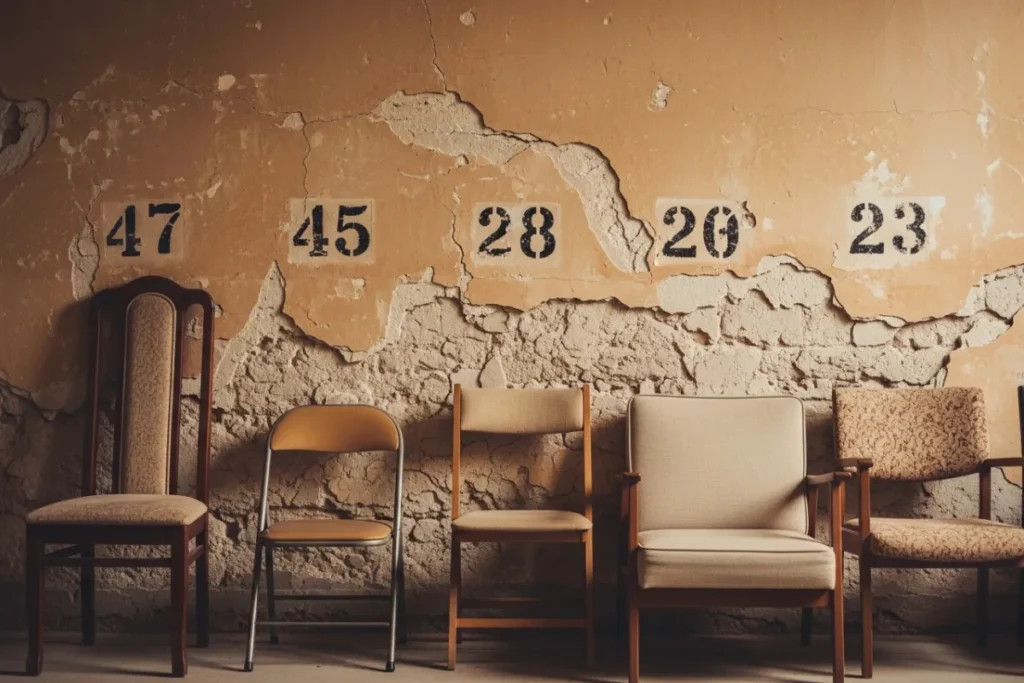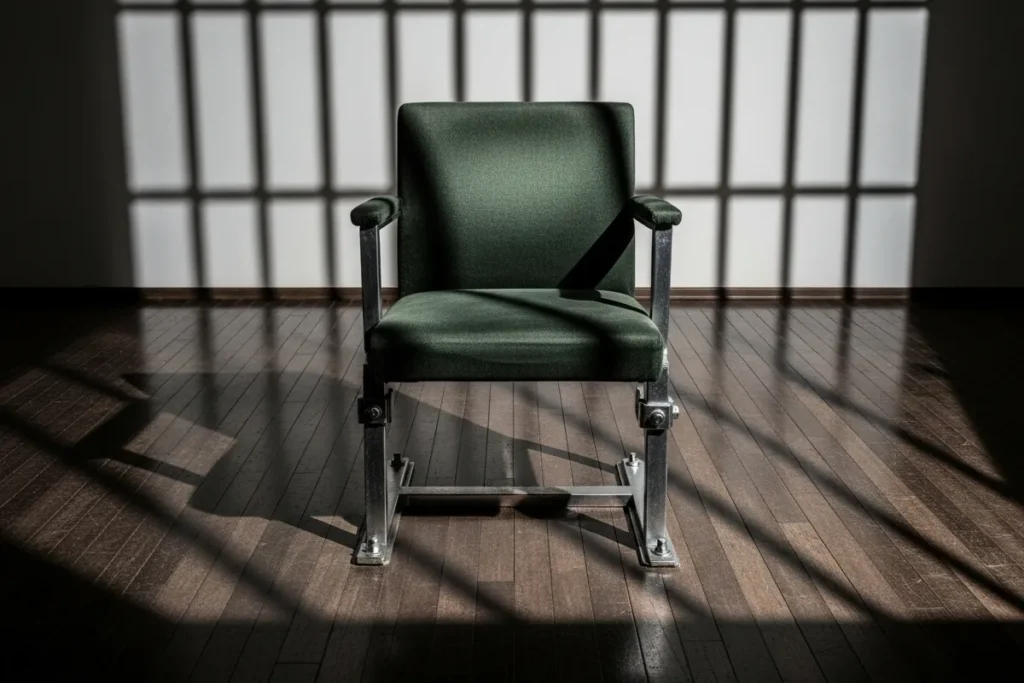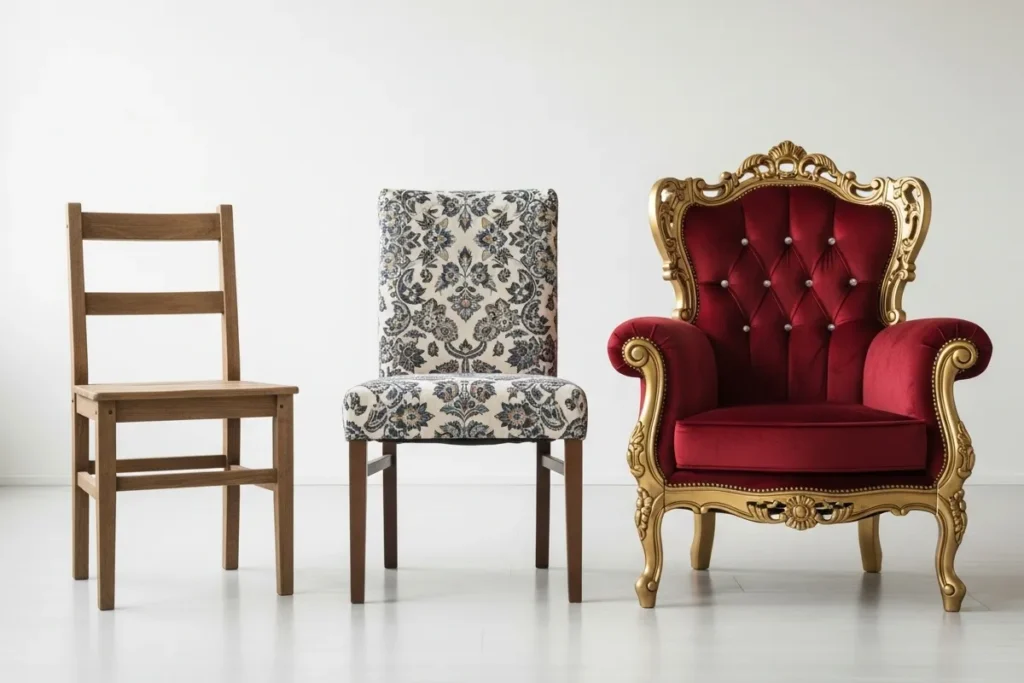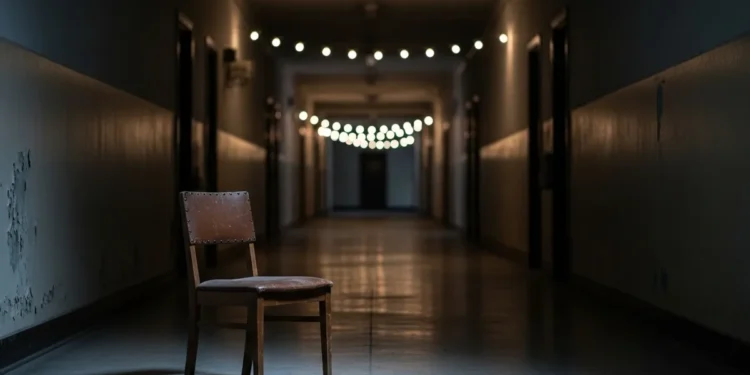Explore the deeper meanings of waiting chairs in public spaces, highlighting how they reflect societal structures and class disparities. This blog delves into the historical evolution of waiting rooms, their design and functionality, and the discomfort experienced by individuals based on social class. Discover how waiting room power dynamics impact the human experience and the need for inclusive design to foster dignity and respect within public institutions. Join the conversation on challenging the status quo and promoting equity in everyday shared spaces.
Table of Contents
Introduction to the Waiting Chair
The concept of a waiting chair transcends its functional role in various environments such as hospitals, offices, and public transportation. Commonly found in waiting rooms, these chairs serve as a necessary piece of furniture that facilitates temporary repose for individuals awaiting services or appointments. However, the waiting chair embodies deeper meanings, acting as a subtle indicator of societal structures and expectations regarding time and privilege (1). It invites a critical examination of how social class influences experiences in these shared spaces.
Typically, waiting room power dynamics are underscored by the design and comfort level of the seating provided. In many public institutions, the quality of waiting room furniture can vary significantly, with some settings opting for utilitarian options that prioritize durability over comfort. This variance often reflects a broader commentary on socioeconomic status, as wealthier institutions tend to offer more comfortable seating arrangements, while poorer facilities may furnish their waiting areas with chairs that are less inviting. The uncomfortable seating stories that emerge from these disparities highlight the inequities present in everyday life, particularly when individuals are required to spend significant time in waiting rooms.
Moreover, waiting chairs serve as symbolic chairs in public spaces; they are not merely objects designed for rest, but rather manifestations of how society perceives time and its value. The discomfort experienced in some waiting rooms can serve to reinforce a sense of status disparity among individuals, creating a subtle hierarchy based on the quality of seating. As we delve deeper into the history of public institutions and their treatment of waiting spaces, it becomes apparent that the waiting chair is more than just a functional item; it is, in fact, a poignant symbol of the human experience of waiting, rich with implications about class, privilege, and the overall societal narrative.
A Historical Perspective on Waiting Rooms
The concept of waiting rooms has evolved significantly over the centuries, tracing back to the advancements of industrialization and the expansion of bureaucratic institutions. Initially, such spaces were informal areas where individuals would gather to conduct business or await services. As societies grew more organized and structured, these areas transformed into formal waiting rooms, often characterized by their specific furnishings and design elements.
With the rise of public institutions in the 19th and 20th centuries, waiting rooms became more prevalent in hospitals, clinics, and government offices. The design of these spaces often reflected prevailing social norms, where social class furniture played a crucial role. Waiting areas were typically furnished with chairs and benches that not only served a practical purpose but also acted as symbols of status and class. The choice of symbolic chairs in public spaces often indicated who was deemed worthy of comfort and consideration, an early reflection of the waiting room power dynamics at play.
Architects and designers were tasked with creating environments that facilitated order while also implicitly conveying hierarchy. For instance, plush seating might be reserved for esteemed clients or patients, whereas uncomfortable seating options were often allocated for the general populace. This stark contrast in comfort levels led to many uncomfortable seating stories, where individuals found themselves in situations that highlighted their social standing. The dichotomy of waiting room furniture not only influenced physical comfort but also mediated interactions and reinforced societal boundaries.
Throughout this transformation, waiting rooms became microcosms reflecting broader societal changes, mapping out the intersections of class, privilege, and power. This historical perspective underscores that furniture, like the iconic waiting chair, extends beyond utility; it encapsulates the social fabric that governs our interactions within public institutions and collective spaces.

The Design and Functionality of Waiting Chairs
Waiting chairs are an essential element in public spaces that reflect broader social dynamics and inherent power structures. The design of these chairs typically prioritizes space efficiency and durability, often at the expense of user comfort. Many waiting chairs are constructed from hard plastics or metal, which, while easy to clean and maintain, do little to provide ergonomic support. This can lead to uncomfortable seating experiences, leaving individuals waiting for prolonged periods feeling neglected and marginalized.
Ergonomic considerations in waiting room power dynamics are often minimal. The seating arrangements frequently encourage a culture of impatience and discomfort, subtly signaling to users their place within the social hierarchies present in various institutions. The emphasis on utilitarian design over user-friendly features reinforces the notion of social class, as the most comfortable seating is often reserved for higher-status individuals, while others are relegated to stiff, uncomfortable chairs. This stark contrast in value can foster feelings of inequality among users, reflecting broader societal values concerning worth and dignity.
The materials and aesthetics of waiting chairs further illustrate the disparity in how different social classes are treated within public institutions. For example, waiting room furniture in hospitals may utilize inexpensive, mass-produced materials, whereas upscale medical facilities might feature more inviting designs with plush, cushioned seating. This disparity can affect not only comfort levels but also the psychological experience of waiting. Symbolic chairs in public spaces serve not only a functional purpose but also signify the manner in which institutions perceive and treat their clientele. Overall, the design and functionality of waiting chairs unify the themes of social class and discomfort, contributing to a collective experience that often remains overlooked.
Waiting Chairs and Class Discrimination
The waiting room, a space intended for temporary respite, often reveals deeper societal inequalities through its choice of furniture. Waiting chairs can act as a metaphor for class discrimination, illustrating how socio-economic status influences an individual’s experience in public spaces. The design and comfort of these chairs are not merely aesthetic choices but, rather, serve as reflections of the broader social class dynamics at play. High-status institutions often furnish their waiting areas with luxurious seating, embedding a sense of worth and consideration for the user. Conversely, lower-tier establishments frequently opt for uncomfortable, utilitarian seating options that speak volumes about their assumptions regarding customer importance and value.
This practice can be explained through the concept of social class furniture, where the quality and comfort of waiting chairs are tailored to reflect the perceived worth of the clientele. For instance, patients in a private healthcare facility may enjoy plush, ergonomic seating, whereas individuals in a publicly funded clinic may find themselves perched on hard plastic chairs. Such disparities highlight the uncomfortable seating stories that many encounter, emphasizing the stark contrast in experiences based on socio-economic status.
The symbolic chairs in public spaces draw attention to the implicit messages sent by institutions. When the primary objective of a waiting room is comfort and dignity, disparities in seating arrangements become glaring indicators of discrimination. The implications of these design choices can foster feelings of inferiority among those seated in uncomfortable chairs, complicating their relationship with the institution providing the service. Moreover, this division in waiting room power dynamics not only affects the immediate experience but also reinforces broader societal prejudices regarding class standing and access to quality care. Such patterns in public seating warrant a critical examination to address the social disparities perpetuated through passive design choices.

Bureaucracy and the Waiting Experience
The experience of waiting within bureaucratic systems often serves as a powerful lens through which we can examine the broader implications of power dynamics in public institutions. Waiting, particularly in environments characterized by long lines and uncomfortable seating, often engenders feelings of frustration and helplessness among individuals seeking services. The waiting room power dynamics manifest starkly as people navigate through the labyrinth of bureaucratic procedures. Here, individuals may feel reduced to mere numbers, reinforcing a sense of marginalization that stems from social class and institutional hierarchy.
This experience is often compounded by the choice of furniture in these public spaces. Symbolic chairs in waiting areas can convey a range of messages about status and authority. For instance, the design and comfort level of seating can reflect the perceived value of the individuals waiting. Many waiting rooms opt for social class furniture that prioritizes functionality over comfort, which can leave visitors feeling like unwelcome guests rather than valued clients. The pervasive use of uncomfortable seating contributes to the overall narrative of disempowerment, making the waiting experience more distressing.
Uncomfortable seating stories frequently arise from these scenarios, as individuals recount their experiences of long waits in hard, rigid chairs, designed more for durability than for human comfort. This physical discomfort mirrors the emotional stress often associated with navigating bureaucratic systems. The history of public institutions reveals that the design choices we see today are a continuation of past policies that have historically marginalized certain groups. As such, the atmosphere created within waiting rooms becomes both a reflection of and a contributor to the overarching dynamics of power and inequality present in society.
Social Impotence and the Waiting Chair
The experience of waiting in a chair, particularly in public spaces, brings to light a complex interplay of emotional and psychological factors that can influence an individual’s sense of self-worth. Waiting rooms, often filled with socially stratified furniture, serve as crystal-clear reflections of social class dynamics. The uncomfortable seating stories surrounding these chairs highlight not only physical discomfort but also a deeper sense of frustration that can emerge while individuals await their turn for service or assistance.
In these moments, one’s agency can feel stripped away. The act of waiting can foster feelings of helplessness, particularly when the chairs themselves—often designed with a certain aesthetic intention, yet devoid of comfort—serve as a constant reminder of one’s lower status within social hierarchies. The notion of symbolic chairs in public spaces becomes pertinent, as they can evoke sentiments of exclusion and inferiority. For many, these waiting room power dynamics contribute dramatically to their perception of personal value and societal position.
Such instances paint a broader picture of how mundane settings can exacerbate emotional distress, illustrating the power of our environments in shaping psychological experiences. The waiting chair, in its silent contest of power, becomes not just a place for physical waiting but a metaphor for the social impotence faced by individuals navigating these spaces.

Cultural Reflections: Art and Literature
The portrayal of waiting chairs in art and literature serves as a powerful commentary on societal norms and waiting room power dynamics. Various artists and writers have explored the uncomfortable nature of waiting, using seating arrangements to reflect on wider social issues. In literature, authors such as Virginia Woolf and Franz Kafka have depicted waiting as a metaphor for existential dread and the experience of alienation in modern society. For instance, Woolf’s “Mrs. Dalloway” captures the essence of waiting as it intertwines the characters’ lives, subtly pointing to the social class furniture that defines their standing in society.
Similarly, in visual arts, waiting chairs often symbolize the disposability of individuals within public spaces. The installation art of Francis Alÿs, for example, centers around urban settings where individuals find themselves immobilized by societal pressures, prompting viewers to reflect on their own experiences of waiting. Alÿs’ work encourages an examination of symbolic chairs in public spaces, which whisper of privilege and exclusion, often revealing stark contrasts based on social class. The aesthetic choices surrounding these pieces—whether stark and uncomfortable or ornate and inviting—are deliberate, evoking various emotions associated with waiting.
Redesigning the Waiting Experience
The experience of waiting in public spaces, especially within waiting rooms, often reflects broader societal dynamics. The traditional design of waiting areas, characterized by sparse seating arrangements and minimal comfort, highlights uncomfortable seating stories that may alienate certain individuals based on their social class. To foster inclusivity and ensure respect for all individuals, it’s essential to rethink the concept of waiting room power dynamics and how they can be transformed through intentional design.
First, integrating more comfortable and varied seating options—ranging from lounge chairs to benches that accommodate families—can help reduce feelings of discomfort and unease. The idea of symbolic chairs in public spaces plays a critical role in this transformation. By selecting furniture that signifies inclusivity, we can communicate a sense of belonging and respect. Seating that allows for personal space or offers a choice of communal arrangements can also help create a more welcoming environment.
Furthermore, the history of public institutions shows us that early designs often prioritized functionality over comfort, reinforcing hierarchical structures. By reconsidering these designs, greater emphasis can be placed on aesthetics and user experience. Materials and colors can be chosen to create warmth, while layouts can be arranged to encourage social interaction amongst visitors, thereby combating feelings of isolation.
It is also important to actively involve users in the design process. Gathering feedback from those who frequent public waiting areas can yield invaluable insights into their needs and preferences. This engagement ensures that waiting rooms evolve into spaces that genuinely cater to diverse social classes and backgrounds. By implementing these design strategies, we can transform waiting rooms into environments that respect the dignity of all individuals, shifting the narrative from discomfort to comfort and connectivity.
Conclusion: Challenging the Status Quo
The exploration of waiting room power dynamics and their implications reveals a significant aspect of societal structures often overlooked in public discourse. The choice of social class furniture within waiting spaces plays a crucial role in shaping our experiences, often reflecting and reinforcing broader systemic inequalities. By selecting uncomfortable seating arrangements, institutions convey a message that affects individuals’ perceptions of their worth, often relegating them to positions of discomfort and unease. This is particularly evident in public institutions, where symbolic chairs in public spaces are not just functional; they symbolize societal attitudes towards different classes of individuals.
The discomfort experienced in these settings often leads to the formation of uncomfortable seating stories, which highlight the broader implications of how waiting spaces are designed. These narratives, stemming from experiences shared by those who find themselves ensnared in such environments, illustrate the emotional and psychological toll that furniture choices can impose on people from various social backgrounds. The yearning for comfort—an element that should be a given in public spaces—underscores a stark truth: we must reevaluate how society perceives and designs waiting spaces.
By doing so, we can acknowledge the dignity of all individuals, regardless of their social class. It is paramount to challenge the systems that perpetuate this inequality, and the conversations surrounding waiting room power dynamics should become a foundational discourse within the realms of urban design and public policy. As we push for more inclusive and considerate design principles, the seemingly mundane realm of waiting spaces can transform into environments that respect and uplift every individual, allowing them to feel valued rather than marginalized. It is a call for change that demands our collective attention and action in pursuit of an equitable society.
😄 Who knew everyday stuff had such wild backstories? Stick around—your curiosity will thank you!







